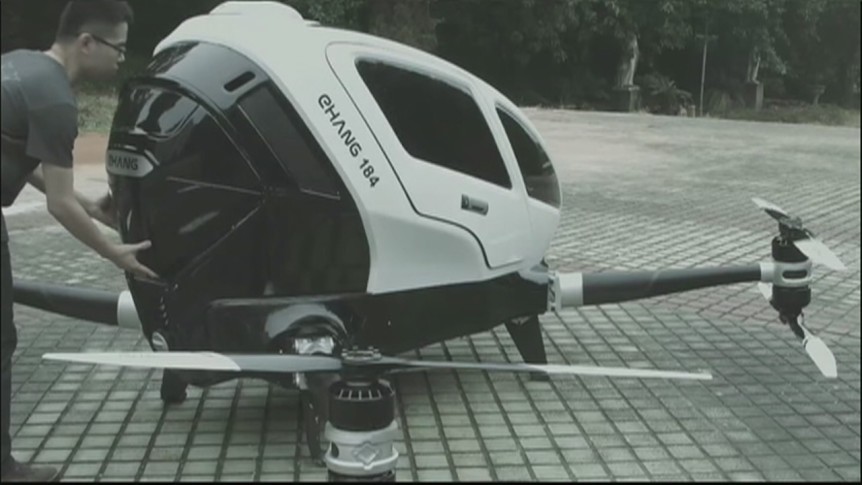China’s Ehang builds a drone to fly humans
Stepping into a personal drone that will fly you to your destination seems like the stuff of science fiction, but one Chinese start-up proposes to do exactly that.
High quality global journalism requires investment. Please share this article with others using the link below, do not cut & paste the article. See our Ts&Cs and Copyright Policy for more detail. Email ftsales.support@ft.com to buy additional rights. http://www.ft.com/cms/s/0/a6dede66-b499-11e5-8358-9a82b43f6b2f.html#ixzz3wcHGFuKf
In one of the most ambitious — some might say outlandish — launches at the CES 2016 event in Las Vegas, drone maker Ehang released the new “184” drone, a self-flying vehicle that can carry a human passenger.
Regulators have not yet approved the vehicle for human use, however, and all drones are restricted in Las Vegas, meaning CES attendees will not be able to see the 184 fly.
Guangzhou-based Ehang has raised more than $50m from venture investors and is taking on China’s leading drone maker DJI at a time when drone sales worldwide are soaring.
Chinese drone makers have gained pole position in the global industry, thanks in part to China’s rules on testing and flying drones, which are more permissive than in the US. DJI made the first mass-market camera drone — the Phantom — and is now the biggest consumer drone company in the world by sales.
Sales of drones, many of which are made in China, will more than double this year in the US, hitting nearly $1bn, the Consumer Technology Association said.
However, drone regulations continue to pose a challenge for recreational and commercial drone users around the world. In the US, the Federal Aviation Administration announced last month that all drones weighing more than half a pound would have to be formally registered.
Ehang said it was in the process of applying for certification to fly the 184 drone, and has already completed testing with human passengers in China.
Shang-wen Hsiao, co-founder and chief financial officer, told the Financial Times he was optimistic that the drone would be adopted by cities seeking to solve congestion issues.
